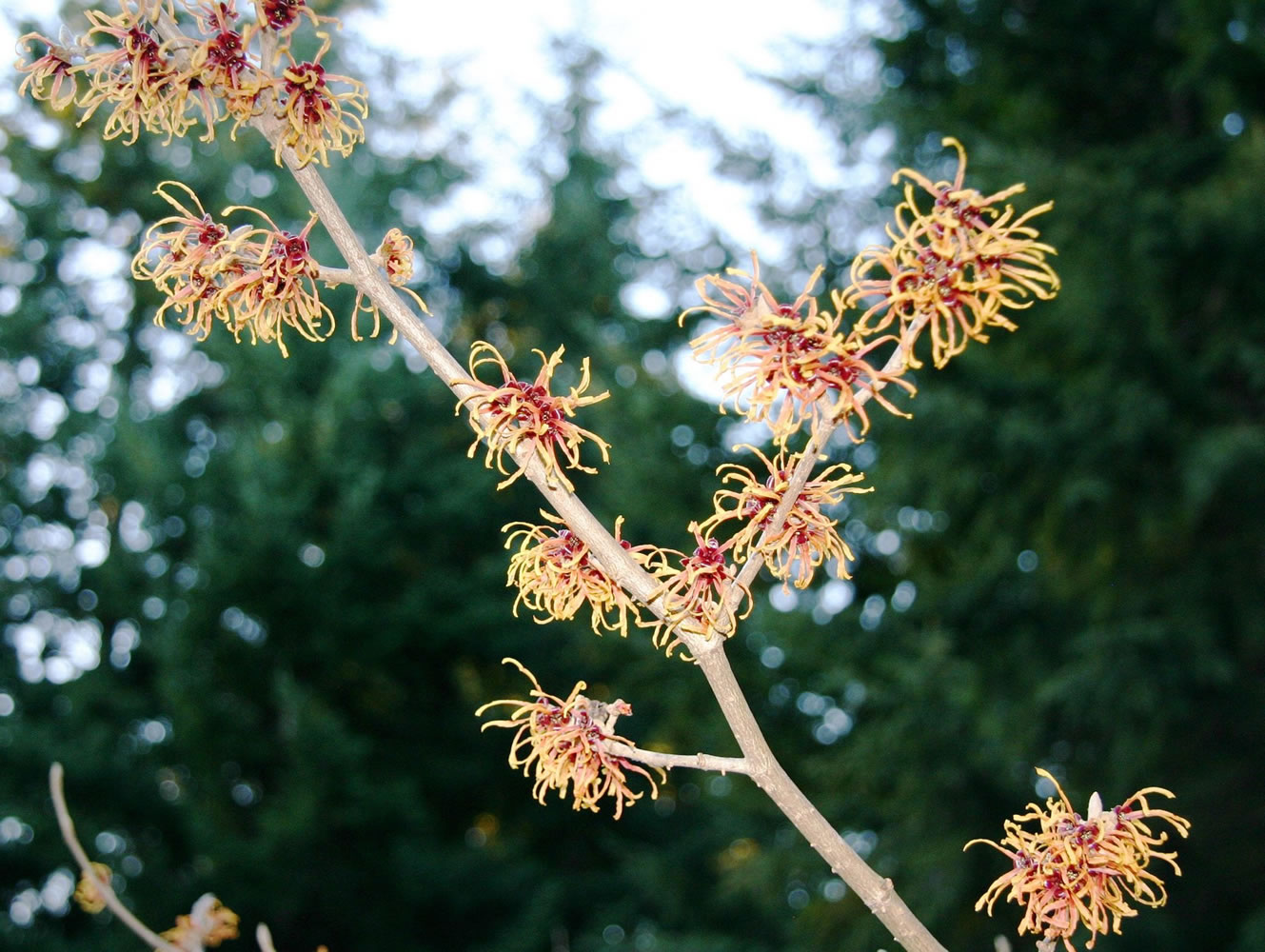The greatest distinction between a gardener and a non-gardener is the non-gardener’s belief that nothing grows in winter. Some people actually believe that there is nothing in bloom, nothing to do and nothing of interest going on in the winter garden. I can assure you that come rain, snow or gloom, a morning walk around a well-planted garden can be a life-affirming experience.
For me, a morning garden walk is the first step toward a sense of well being. With my neighbor’s dog Roxy, a steadfast and true friend in every season, and a parade of cats so inclined to join us, we scour the garden for winter delights. Within a month, the buds of assorted Sasanqua camellias will be fat to bursting with red, white and seashell pink blossoms.
Only in the midst of winter will we find Viburnum bodnantense “Dawn” in full flower, with dainty bundles of sweetly fragrant blossoms the color and scent of cotton candy. At the driveway dogleg, the arthritically twisted, fingerlike blossoms of the witch hazel, Hamamelis x intermedia “Jelena” are quite lovely on closer inspection. This winter bloomer sports petals shooting out of leafless branches in metallic colors of orange, bronze, and copper.
By definition in Webster’s Dictionary, “Winter is the coldest season of the year, extending from the end of autumn to the beginning of spring.” I can accept this bare-boned description. I cannot, however, agree with the following information, “… a time marked by lack of life, warmth and cheer.”



